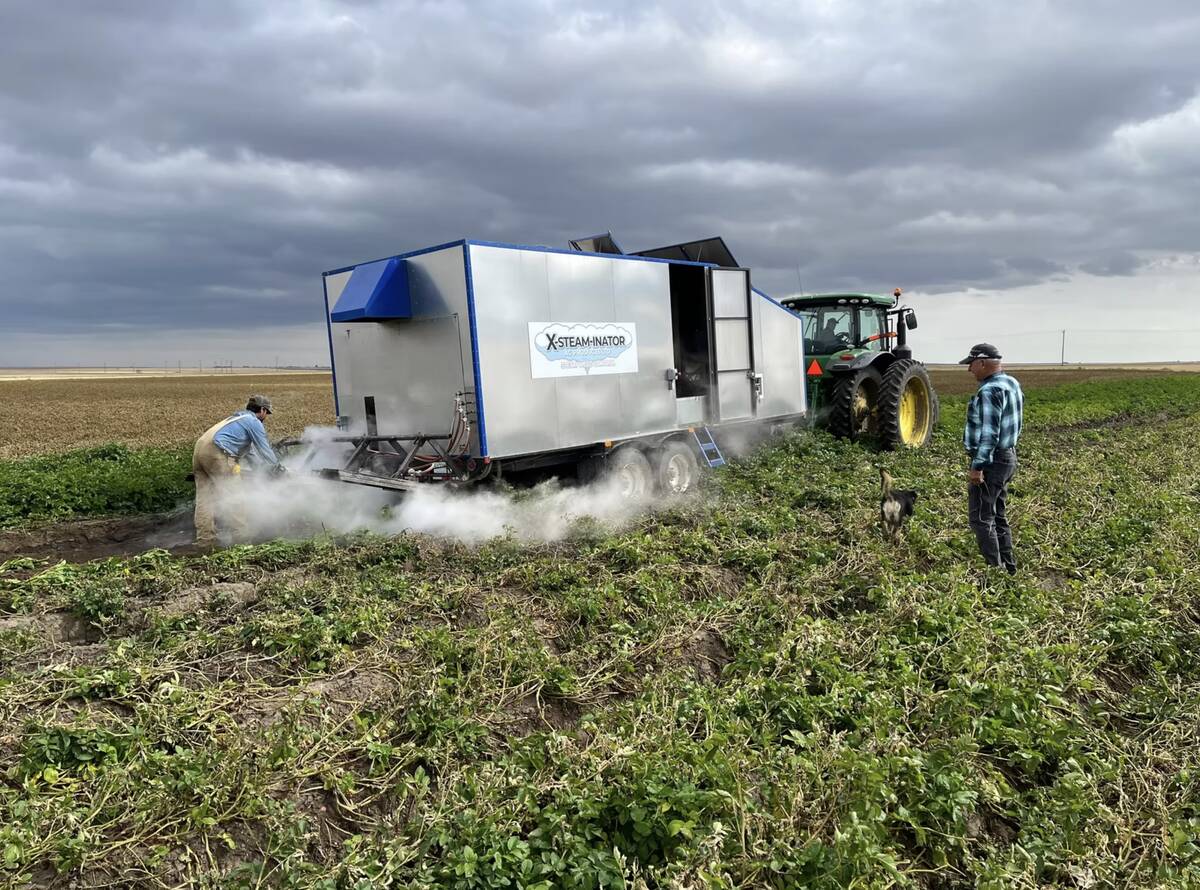As herbicide use continues to come under fire from the public, alternative solutions to weed control frequently pop up over time. Here in Grainews we’ve looked at a few, including companies that are using electricity or high heat to kill weeds.
Recently a report published by the Propane Education and Research Council (PERC) in the U.S. caught our attention. It featured a field implement designed to be pulled by a tractor and inject steam into the soil to kill weed seeds where they’re lying in wait — a method similar to practices such as anhydrous ammonia application.
Read Also

Cancer agency reclassifies another herbicide ‘probably carcinogenic’
The WHO’s cancer research agency has now put atrazine, a herbicide well known to corn growers, in the same potential-hazard category where the agency put glyphosate.
The report cited results from a project undertaken by two U.S. universities that PERC funded. The implement used propane as an energy source.
“The banded applicator injects steam along the seed line before planting,” it reads. “Researchers say heating the soil to 150 to 160 F for 15 to 20 minutes controls more than 90 per cent of certain troublesome weeds.”
That apparently led to a significant reduction in labour costs in weed control in the test field growing vegetables.
Other research reports, however, have been skeptical of the value of using a mobile steam application to kill weed seeds in the soil. Also, the idea isn’t new.
“It’s been around for a while,” says University of Saskatchewan professor Steve Shirtliffe. “We’ve done a little bit of research (on it) with a company that was starting up.”
That research effort found getting the soil up to a high enough temperature to kill weed seeds proved very difficult with a mobile implement.
“Even with going very slow, the temperature did not even get close to what it would have to be to kill weed seeds,” Shirtliffe adds.
“Seeds are harder to kill than microbes in most cases. Seeds are resistant to heat, sometimes even very high temperatures. There are two things with thermal injury: how high are you getting the temperature, and what’s the duration of that? It’slike cooking something.”
And even if the necessary temperature can be achieved to accomplish that, the effect isn’t limited to weed seeds and unhelpful microorganisms.
“It’s basically a scorched-earth policy,” Shirtliffe says. “You’re essentially sterilizing the soil. All the macrofauna in the soil will be killed, unless they’re deeper down than the part you’re heating up.”
In the trials Shirtliffe was involved in, the energy costs were so high as to be impractical. “To reach a high temperature in something as dense as soil that is moist takes a lot of energy.”
But there is a more practical way to use steam to control weeds, he suggests — namely, waiting until they emerge and hitting them then with a different type of applicator.
Steam applied to young green weeds can be very effective at killing them, according to a 2017 paper published in the New Zealand Journal of Agricultural Research.
That study looked at using a mobile implement to apply steam to young green weeds.
“At a tractor speed of three km/h, steam killed 100 per cent of 10-day-old mustard plants, sown as a surrogate weed,” the report says.
“Plants of all the other species were killed when the treatments were applied soon after emergence (cotyledon stage), but as the plants increased in size, they became more resistant to heat, either because the terminal or axillary meristems were protected by soil, or because meristems were protected by thickened stems and leaves as the plants aged.”
“If you think about it, would it be easier to kill a little green plant or heat up the ground enough to kill a weed seed that’s in the ground?” says Shirtliffe.
Using steam to kill young, growing weeds has so far proven to be the most practical and cost-efficient way to use that technology for most applications, he says, and research around steam use in weed control continues to be discussed in academic circles as chemical control continues to draw unfavourable press.
















